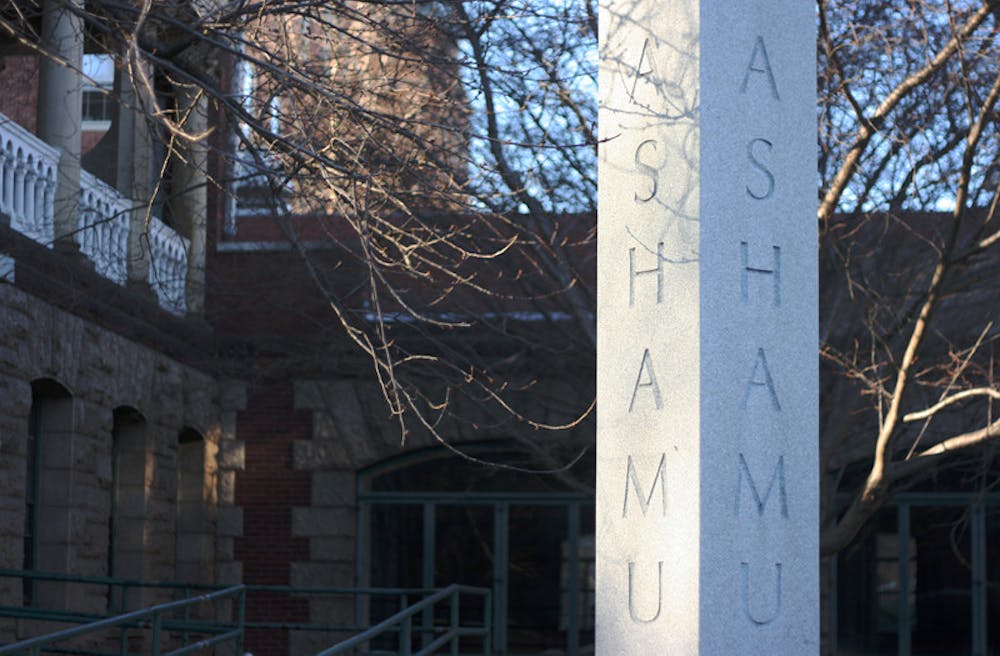It is the end of an era for Fusion, which announced at its spring show last week that it will no longer be performing in the Ashamu Dance Studio, its home for the past 25 years.
"There's a lot of memories and performances in there and it's hard to give it up," said Ashley Kim '11, a member of the eclectic dance group. "Its been a great place to practice in, and to hold shows in, and it's hard to think of not being in there anymore."
Associate Professor of Theatre, Speech and Dance Rebecca Schneider, chair of the department, wrote in an e-mail that the department needed the space for its own programs.
"We are committed to supporting the extra-curricular dance program when it does not interfere with faculty and student needs in the Department," Schneider wrote.
Fusion will still be able to use Ashamu for rehearsal space if the department is not using it, but the time in which Fusion has held their performances in the past will no longer be available for the group's use, said Christina Boursiquot '08, co-director of Fusion and director of Body and Sole, an umbrella organization that governs dance groups and independent dancers. Body and Sole also liaises between the Theatre, Speech and Dance department and student groups.
Schneider added that "the issue of space for students has not changed for any students EXCEPT for Fusion, and then not in terms of rehearsal space. This group is now on the same footing with other student groups."But student groups said it is often a struggle for them to find a place to practice and perform.
"At the moment there is a major lack of space," Boursiquot said.
Annie Rose London '11, an Amira bellydancer, said she tried to organize a dance workshop but had trouble finding a space to use. Luckily, she said, Ashamu was available.
"We certainly hear that students are looking for space beyond what is currently available," said Ricky Gresh, director of student activities. "The reality is that there continues to be student organizations recognized, and we don't have available facilities," he said. "Just because UCS recognizes another group doesn't mean a new building pops up."
An adequate dance space includes a studio with a sprung floor and mirrors, Boursiquot said. Ashamu and a space in TF Green Hall are the only spaces with appropriate floors, she said. Sprung floors mean that the floor is built with a small space between the floorboards and the ground, so the floor has a little give, she said.
"Any real dance space has a sprung floor so you can jump and dance and keep your limbs safe," Boursiquot said. She said performers get injured when they have to practice without a sprung floor. "People break toes, people get shin splits and it's bad for your knees."
Fusion Musical Director Jake Ricciardi '09 said mirrors are necessary for dancers to improve.
"It's like telling an orchestra to play and not letting them hear themselves play. We need the mirrors in order to hone our techniques, in order to see ourselves dance," he said. "What you're feeling (while dancing) is not exactly the way it's supposed to look because dance is a very visual art."
London, who is enrolled in two classes in the theatre, speech and dance department, said she agrees that mirrors help dancers improve but wonders if having a specific space is actually necessary.
"Our generation of dances is coming from a place where we all have our own studios and our own spaces, and we think we need a dance studio to dance," London said. "We can dance anywhere. We can dance outside. We don't need to mirrors to dance."
But she added that it the lack of space was frustrating: "It really isn't asking too much to have space or to have a real dance studio. At an institution like Brown, we really (shouldn't) have to be doing that."
London also said she felt that the organization of the dance spaces was problematic, saying that whenever Amira practiced in TF Green, people would wander in, saying they had the space during that time.
"There's always lots of confusion. We have to figure out who actually has the right to be in the space," she said. "It's(getting) kind of claustrophobic. We're all stepping on each others toes all the time."
Ricciardi said there is a dance studio in the Olney-Margolies Athletic Center, which is not currently open to student dance groups. Ricciardi has founded the Brown Dance Initiative, which, among others things, is trying to lobby the University for more space and to open the OMAC studio to dance groups.
An addition to the stage in Alumnae Hall may help alleviate the problem of finding a performance space, Boursiquot said. The stage, which is too small for most performances, is being renovated after an initiative led by Brown opera groups. If dance groups can raise $1,000, the stage can be made large enough for dance performances, Boursiquot said.
But a renovated stage is not the hall's only problem. The entire electrical system has to be redone, and dance groups are looking to find a donor to help them raise the $275,000 necessary to set up Alumnae Hall for performances.
"If we can find a donor, it will be a snap," Boursiquot said.
With the Brown Dance Initiative, students hope to bring attention to the dance programs and get groups the space they want. A petition is circling the campus, and Fusion has asked concert-goers and supporters to sign it.
"We're trying to move forward with it, and to unite all the dance groups so all the groups can grow together," Ricciardi said. "If we can get the dance community, which we gauge as over 500 students at Brown ... then we feel like we can really make some noise here and get things done."

ADVERTISEMENT




